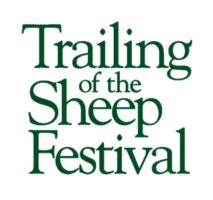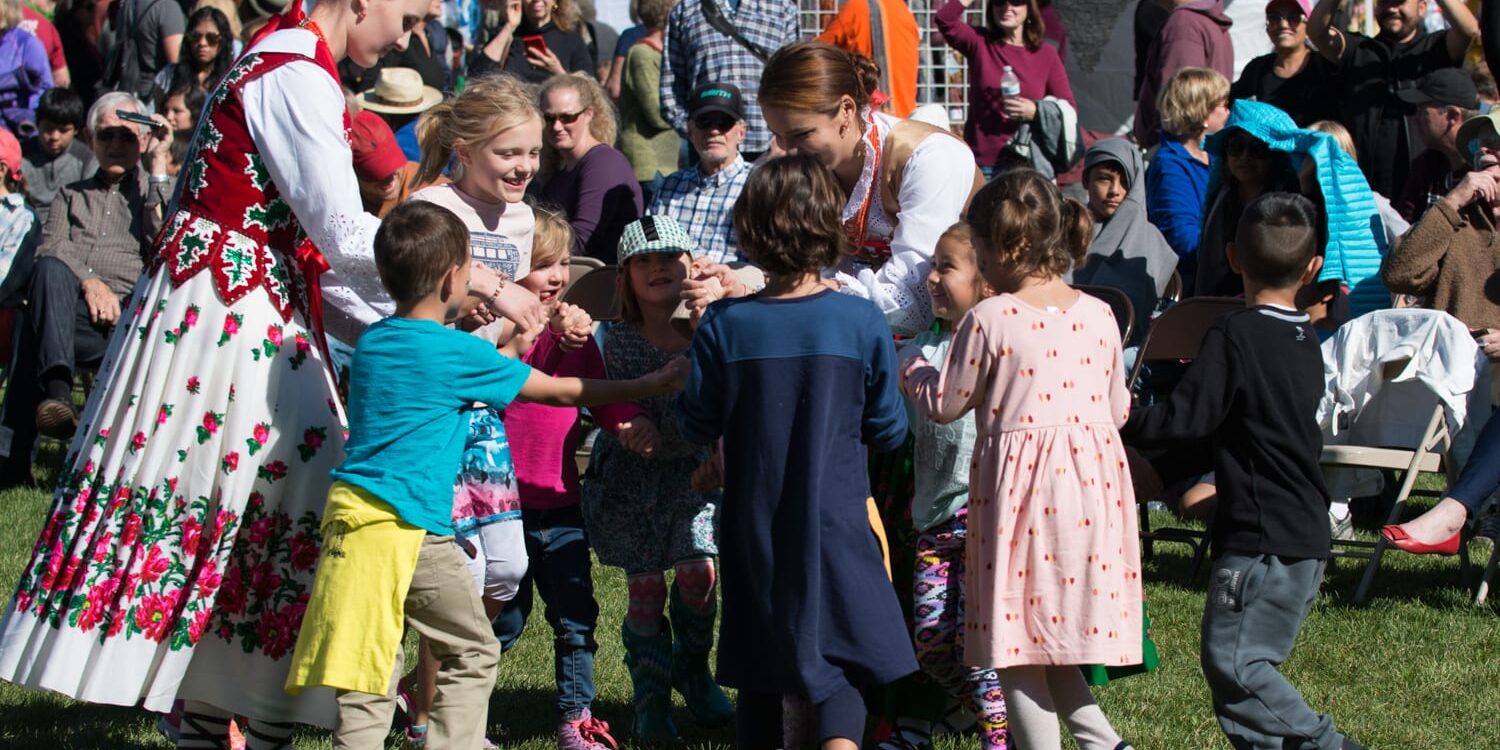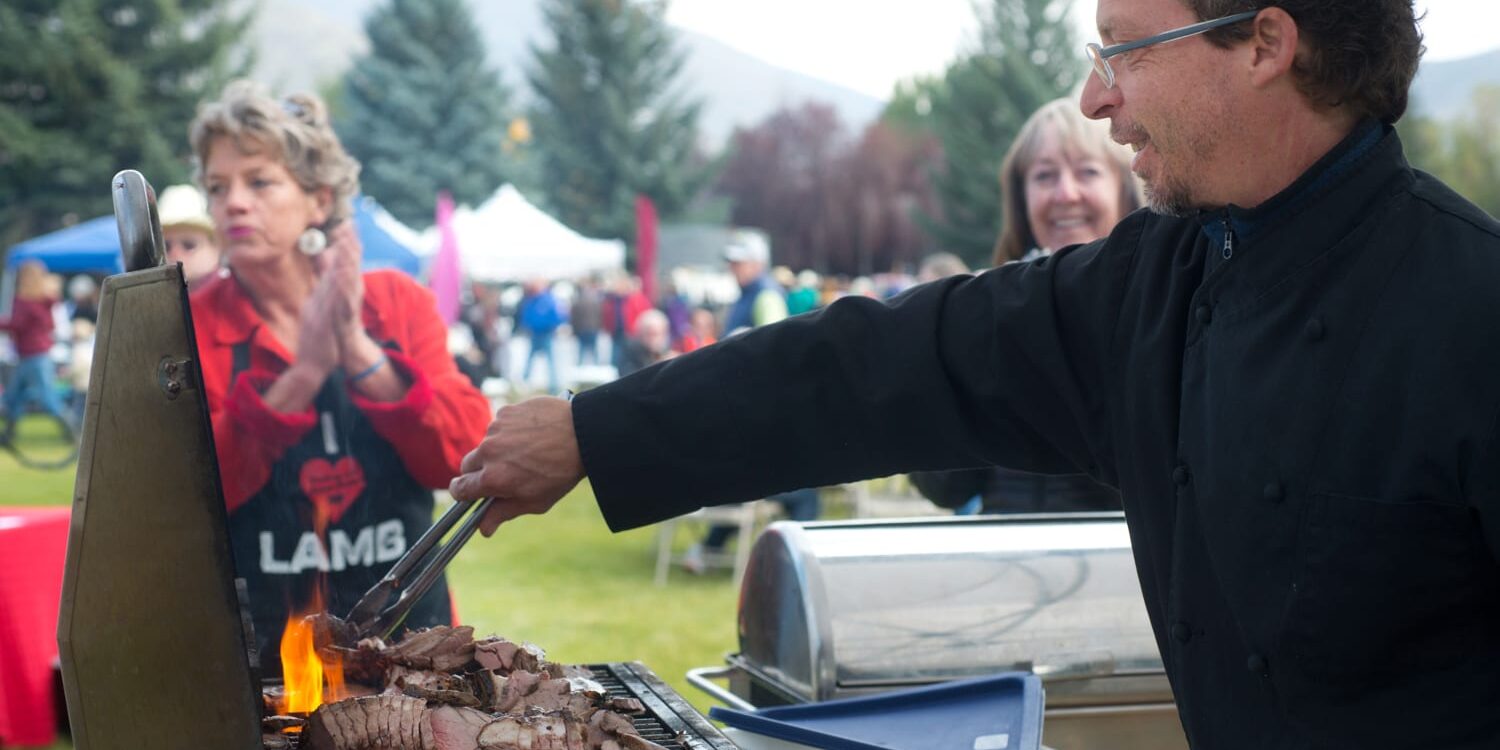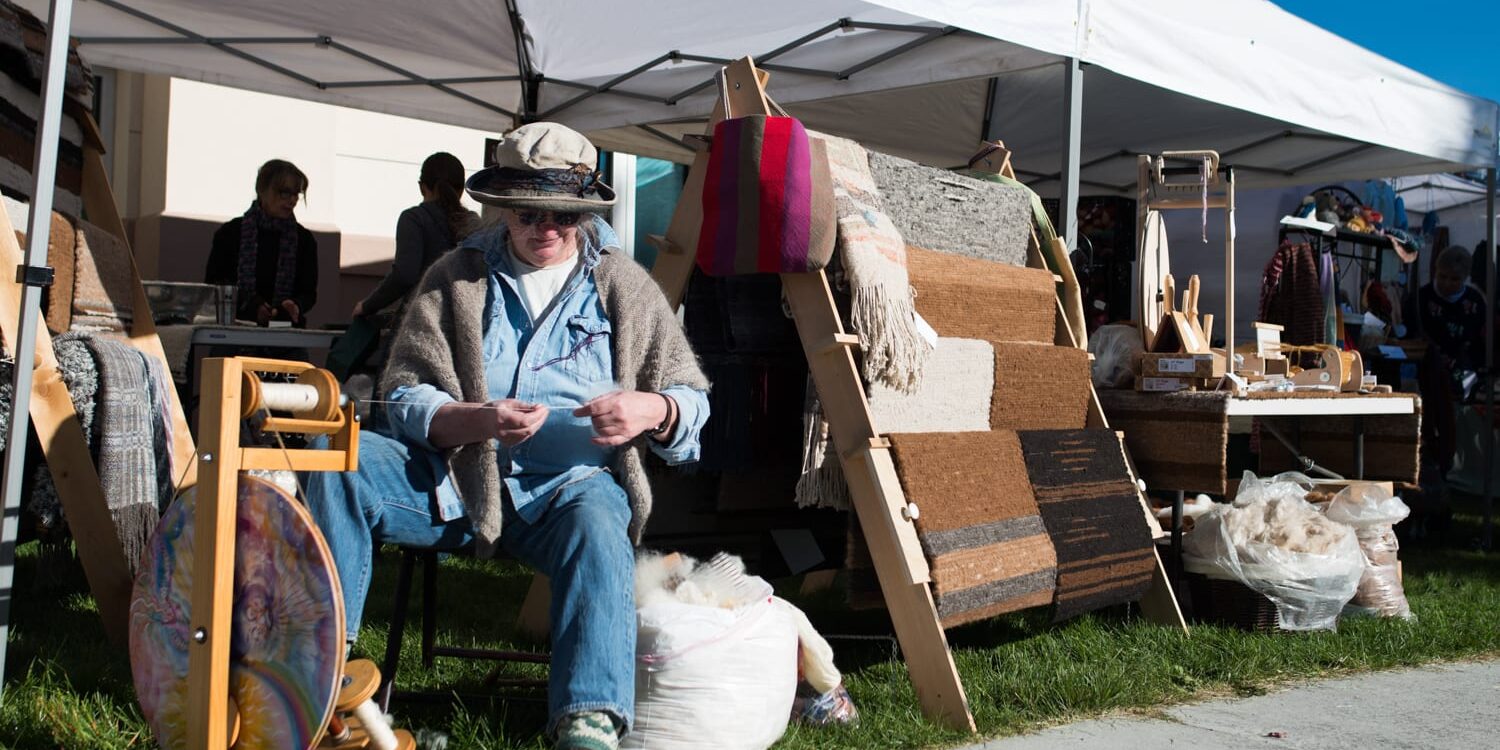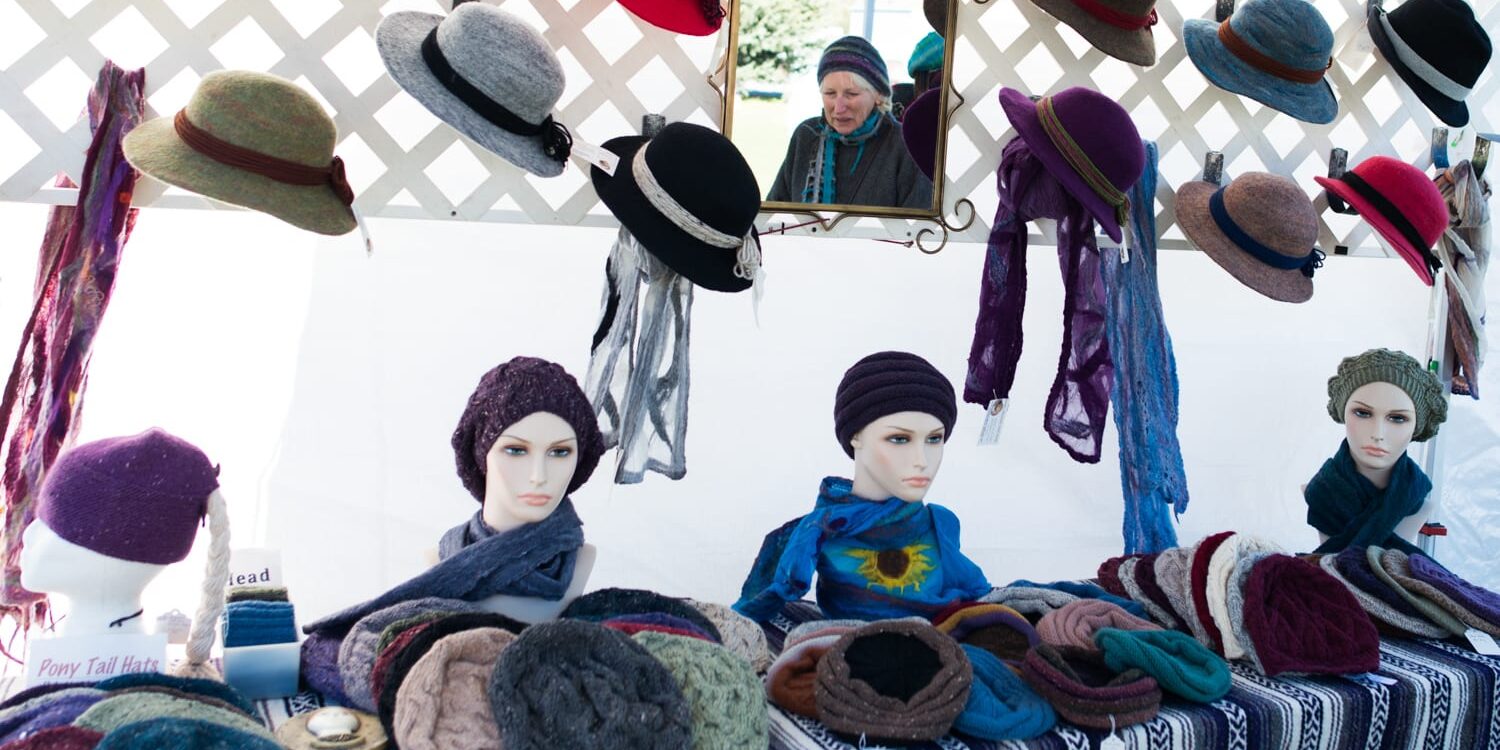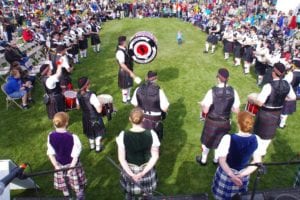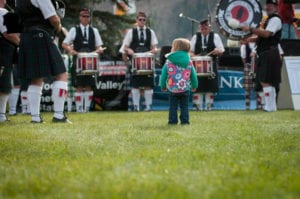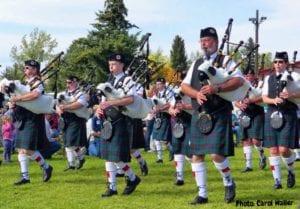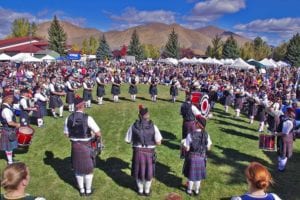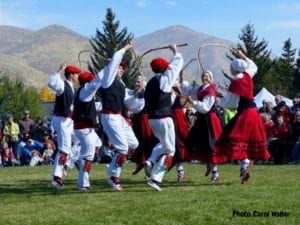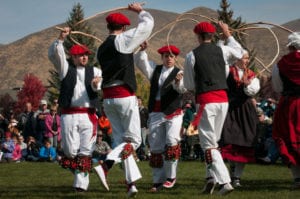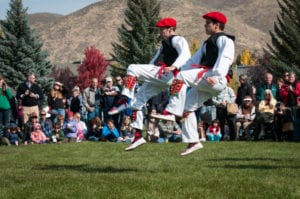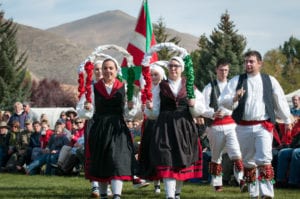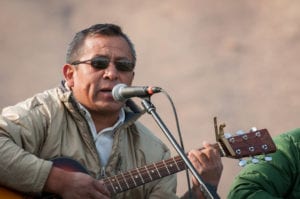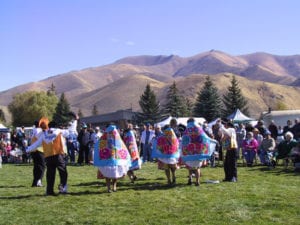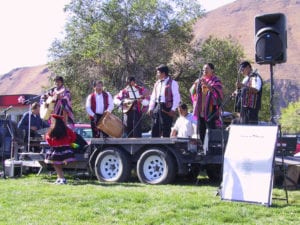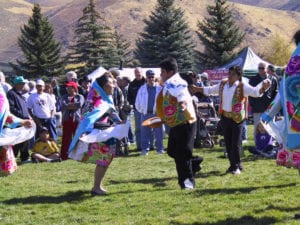Folklife Fair
Saturday, October 5, 2024
10 a.m. to 4 p.m.
Roberta McKercher Park, Hailey
FREE!
The popular and authentic Sheep Folklife Fair provides a full day of things to see, hear and do for all ages! Demonstrations of sheep shearing, displays of sheep wagons, Kids’ Fluff crafts, spinning and weaving demonstrations by artisans, music and dancing by traditional performers, great food and beverages, and over 80 vendors selling their unique art and crafts will be featured.
Craft Vendors - 10:00am - 4:00pm - Our juried show requires vendors to offer handmade items made of wool, wool blends or items related to sheep such as soaps and lotions from lanolin, sheep cheeses or items that augment cooking with lamb. Great photography of sheep and ranch life, jewelry with sheep designs, knitting bowl pottery and items of the Basque and other cultures are also offered at the day-long Fair.
Kids’ Fluff - 10:00am - 4:00pm - Visit the Kids’ Fluff booths for fun crafts and activities for the child in all of us!
Sheep Shearing Demonstrations - 10:00am - 3:30pm - Taking place every half hour, this great family activity gives all a chance to watch sheep being sheared “up close and personal.”
Music - 10:30am - 4:00pm - Featured in the stage area, each cultural group performs twice in rotation so stay a few hours and you will hear them all!
Lamb Fest - 11:00am - 4:00pm (or until the food runs out!) - Choose scrumptious lamb dishes and other lunch treats created by top chefs and local restaurants. And, quench your thirst with water, soft drinks, beer and wine. Visit our Lamb Fest page for more details!
Presentations and Displays (throughout the day!) - Enjoy visiting the authentic sheep camps on display as well as booths and exhibits from the Idaho Rangeland Resources Commission, Idaho Wool Growers and the Western Landowners Alliance. In addition, don’t miss “Curly” and “Lambert” on leash from Hailey, Idaho’s Sky Ranch Miniature Horse & Donkey Rescue.

Craft Vendors
Our selective fair brings 80 vendors, artisans, painters and crafts people from as far away as Texas, Minnesota and California, as well as Idaho, Utah, Montana, Wyoming, Nevada, Oregon and Washington to participate in this one-day show. All sheep-oriented, many vendors say that our festival is their favorite and work year-round making their wares to share. In addition to offering their goods to our visitors, many vendors shop and trade among one another. With many vendors returning annually, the fair also serves as a reunion. Happy shopping!
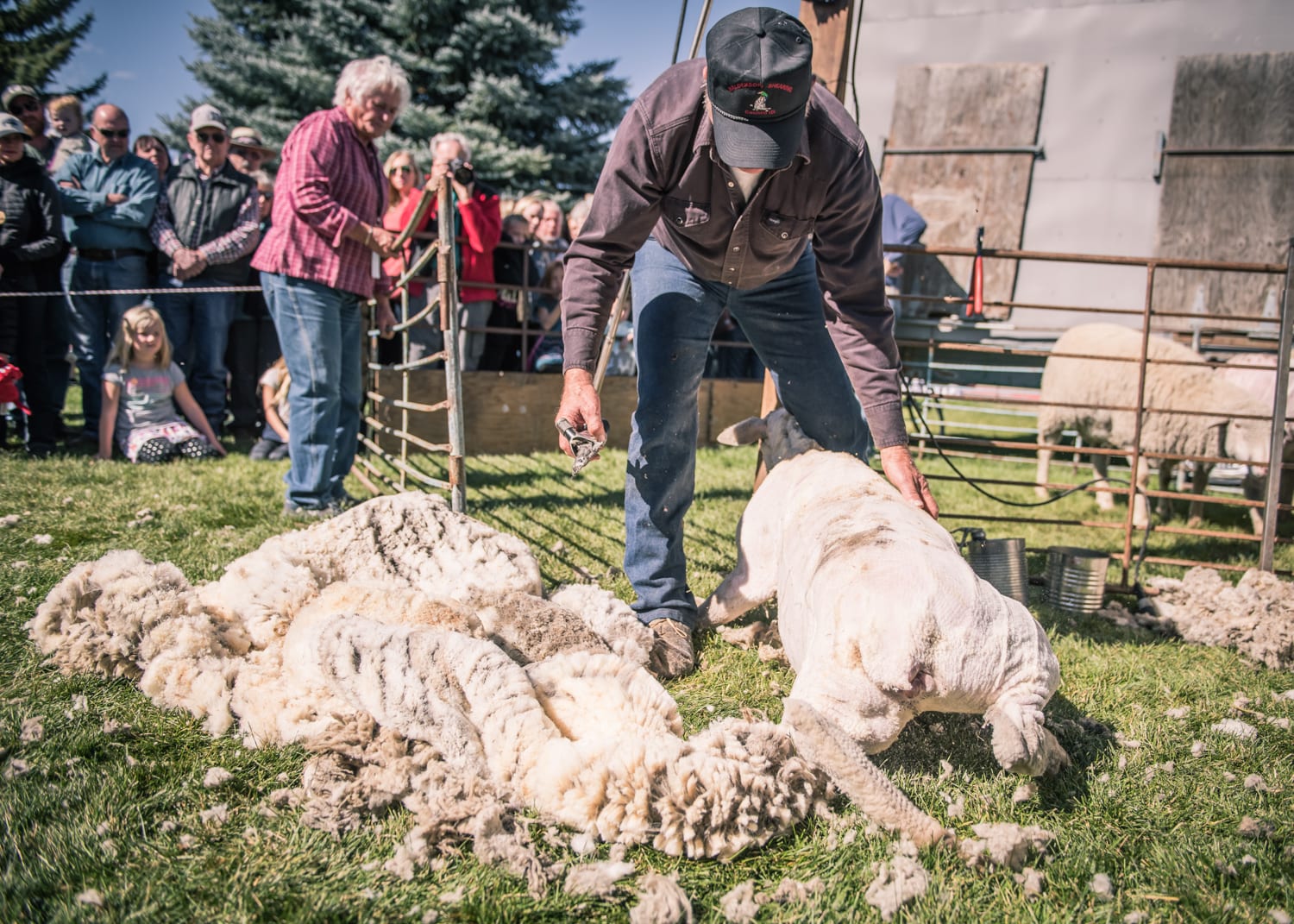
Sheep Shearing Demonstrations
A great activity for the entire family is to watch sheep being sheared at the Fair, with demonstrations taking place every 30 minutes. Cody Cowdrey will be shearing sheep while his wife Amanda narrates and describes the process. Both have years of experience and will be ready to answer your questions.
(Sheep offer many benefits to the rancher - including wool. Annually, in the spring before lambing, ranchers gather the sheep for shearing. This is the ideal time as the sheep have had time to grow the thicker wool that keeps them warm in winter. Once sheared of this heavy coat, the sheep can keep cool during the heat of summer.
With big sheep operations, several shearers are often needed to do the job. A large trailer is brought to the shearing site with a generator to run the electrical shears. The herders funnel the sheep into a chute leading to the shearing trailer and work the animals through one by one. There are usually four to seven men that shear the sheep in each trailer. After the sheep are sheared, they are released.
Workers watch for the wool capes coming off the trailers and stuff them into motorized compactors nearby. The machines compact the wool until they are full. Next, a worker closes the top of the bale and loads it into a truck. Each bale of wool weighs 400-500 pounds. (In the past, the shearing crew compacted the wool by foot. One of the workers would stand and stomp on the load and then climb out when it was full. This was often the chore of the rancher’s children.))
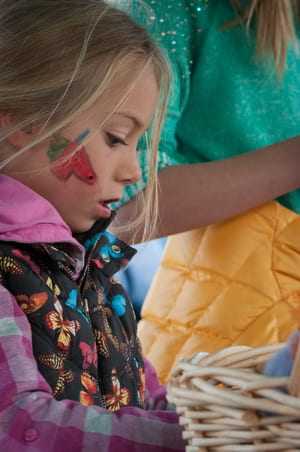
Fun For Kids
Visit the Kids' Fluff booths for fun crafts where children can explore fiber arts at their own level. Teens from the Girl Scouts, 4-H, The Community Table and “I Have a Dream” Foundation-Idaho will guide children through activities sure to bring lots of fun!
(No pre-registration is required. Parents of children aged seven and under are asked to stay with their children. All Kids’ Fluff activities are free of charge, but donations are appreciated and go directly to the youth groups.)
Music
Music prevails at the Folklife Fair. There is something for everyone!
The Boise Highlanders
Bagpipers, Drummers, and Dancers
The Boise Highlanders, formed in 1961, are one of the oldest pipe bands in the Northwest. The Highland drums, often cited as the most complex form of snare drumming, complement the pipers. Dancers join the musicians performing the Highland fling and jigs. Pipers and drummers wear the Davidson tartan, while the dancers wear tartans of their choice. This popular group performs regularly throughout the region. Many years ago, they created a special 'sheep' cover for their pipes in honor of the Trailing of the Sheep Festival which they use only at our event. Scottish immigrants were major contributors to the early sheep ranching operations in Idaho and the region. Bringing their experience from Scotland, they mostly started as herders and hands but several built their own sheep ranches. The Highlanders remind us of this Scottish influence.
Oinkari Basque Dancers
The nationally acclaimed Oinkari Basque Dancers were started by a group of Boise Basque Americans after a trip to the Spanish Basque country in 1960. They began the dance group and called themselves Oinkari (a combination of "oinak" meaning "feet" and "arin" meaning "fast" or "light.") Today, many dancers are the sons, daughters and grandchildren of those founders, carrying on the traditions of their ancient homeland. Musicians trained in traditional Basque music and its instruments accompany the dancers. They play Basque music of varying styles and rhythms using traditional instruments including the txistu and button accordions, accompanied by pandareta and other Basque instruments. The music they play could have been heard coming from a Basque hotel, boarding house or sheep ranch in Hailey, Shoshone, or Boise, Idaho, over 100 years ago.
Peruvian Dancers and Musicians
(formerly Latino X)
These Peruvian musicians have been playing together for several years performing Andean music and the contemporary dance music of Peru. Most members of this group are Wood River Valley residents. Many Peruvians came to Idaho to be sheepherders. After a majority of Basque sheepherders moved on to other jobs and careers, the Peruvians filled the ranchers' needs. Even as many Peruvians also left sheepherding to become local businessmen or changed careers, many of today's sheepherders are Peruvian. These dancers share their culture with us to share the diversity of peoples who have added their influences to our industry and community.
Presentations and Displays

Idaho Rangeland
Created with the cooperative endeavor of the Idaho Rangeland Resources Commission, University of Idaho, Bureau of Land Management, Laura Moore Cunningham Foundation, US Forest Service and the Idaho Soil and Water Conservation Commission, the Idaho Rangeland Outdoors Adventure youth educational project is designed to show a seasonal adventure through Idaho’s rangelands. Representatives will be on-site and available for questions.
